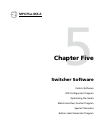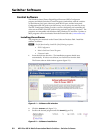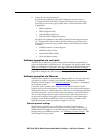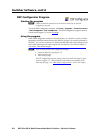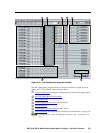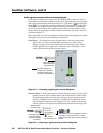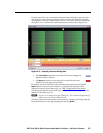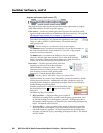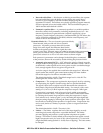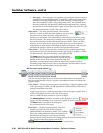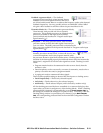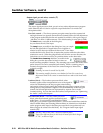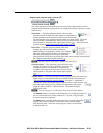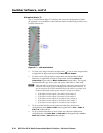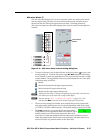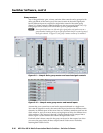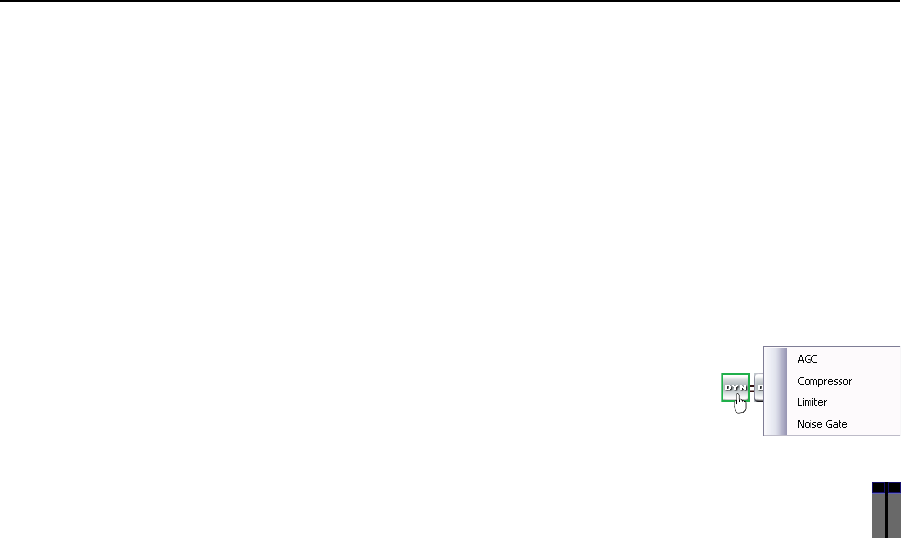
5-9
MPX Plus 866 A Media Presentation Matrix Switcher • Switcher Software
PRELIMINARY
• Bass and treble filters — Also known as shelving or tone filters, the separate
bass and treble filters give the ability to cut or boost gain evenly above
or below a given frequency, with the end-band shape giving the visual
appearance of a shelf. These filters are typically applied to program material,
and are expressed as bass and treble control. The bass default frequency is
100 Hz and the treble default is 8 kHz.
• Parametric equalizer filter — A parametric equalizer is a variable equalizer
that offers control of all parameters, including amplitude (boost/cut — the
amount of gain (boost) or gain reduction (cut) that is applied at a given
frequency), center frequency (frequency), and bandwidth (Q). This allows the
user to control the amplitude of each band, shift the center frequency, and
widen or narrow the affected area.
Dynamics blocks (2) —
The two dynamics processor blocks,
when inserted, each provide one of four dynamic
processors. A dynamic processor alters the dynamic
range of an audio signal, the difference between the
loudest to the quietest portions of the signal above the
system’s noise floor. Dynamic range can either be increased using an expander
(noise gate) or reduced using a compressor. Click the desired dynamics
processor to select it or to view a live audio meter as shown at right.
Each processor’s parameters can be changed in the dialog box, customized
to the processor, that can be accessed by double-clicking the processor block.
•
Automaticgaincontrol(AGC)—AGCadjuststhegainlevelbaseduponthe
strength of the incoming signal to achieve a more consistent volume. Above a
set threshold, weaker signals receive more gain to reach a user-defined target
level; stronger signals receive less gain or no gain at all.
A window range is also applied above and below the target level. When the
signal reaches the window, gain control starts scaling in a linear fashion
toward the target level to achieve smoother results.
The default threshold is -40 dB. The default target level is -10.0 dB. The
default gain and window are 12.0 dB.
• Compressor — The compressor regulates the input signal’s level by reducing,
or compressing, the signal’s dynamic range above a specified threshold.
The signal’s input level to output level ratio determines the reduction in
the dynamic range beyond the threshold setting. For example, with a ratio
setting of 2:1, for every 2 dB of input the compressor outputs 1 dB of gain.
Compression is commonly used to keep mic levels within an acceptable
range for maximum clarity. A compressor make softer sounds louder either
by reducing the dynamic range and then raising the compressor’s output
level (referred to as “make-up gain”), or by increasing the input signal and
then preventing clipping by reducing the louder portions of the signal. This
has the effect of making louder portions of a signal softer. Compression also
can be used, similar to a limiter, to protect a system or a signal chain from
overload.
The default threshold is -30 dB. The ratio is 2.0:1.
• Limiter — The limiter regulates the level of the input signal by severely
restricting its dynamic range above a specified threshold. The limiter
prevents clipping and protects a system against component or speaker
damage. The limiter is closely related to the compressor but applies a much
higher compression ratio, in excess of 20:1 (often expressed as ∞:1) and with
a high threshold setting (default is -10 dB, close to clipping). The ratio cannot
be changed.



